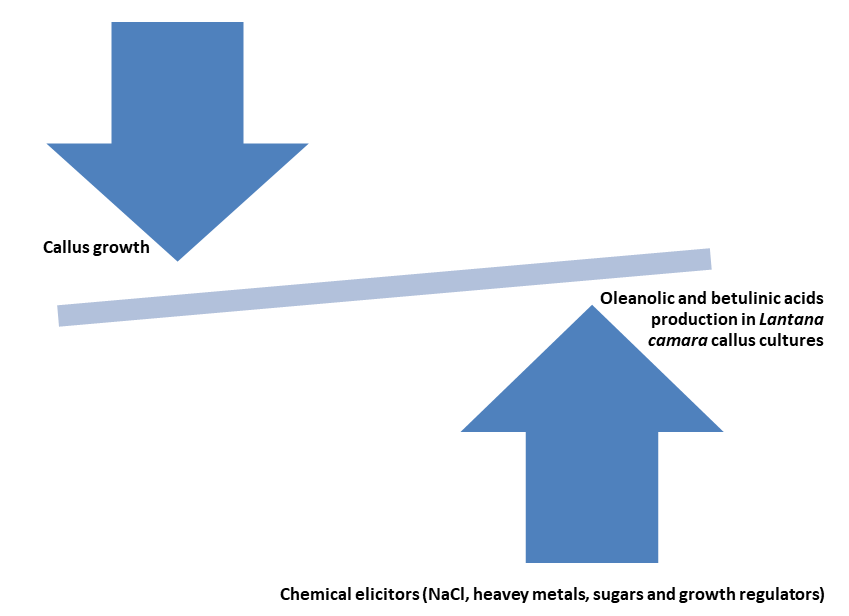Enhancement of Pentacyclic Triterpenoids (Betulinic and Oleanolic acids) Production from Callus Cultures of Lantana camara L.

Published 2020-05-26
Keywords
- elicitation,
- growth regulators,
- heavy metals,
- in vitro,
- Lantana
- Lantana camara L.,
- sugars ...More
How to Cite
Abstract
Lantana camara L. is an ornamental plant with high medicinal value. This study aimed to investigate the possibility of enhancing the production of betulinic and oleanolic acids in Lantana callus by adding different types and levels of chemical elicitors (NaCl, sugars, growth regulators and heavy metals) to Murashige and Skoog (MS) medium. Data revealed that, adding NaCl to the culture medium affected callus fresh weight and color negatively, but it increased the extracted amounts of oleanolic and betulinic acids significantly to reach maximum levels of 0.702 and 0.051 mg/g DW at 120 mM NaCl compared to 0.659 mg/g DW and 0.014 mg/g DW obtained in the control. Meanwhile, increasing glucose level to 36.02 g/l in the medium maximized oleanolic acid accumulation to 0.829 mg/g DW, while betulinic acid accumulation reached 0.038 mg/g DW at 54.03 g/l glucose. In growth regulators experiment, highest callus fresh weight was observed in the control medium, while it declined to the minimum at 0.50 mg/l of Thiadiazuron (TDZ). Maximum values of both acids (0.685 and 0.033 mg/g DW) were recorded in MS medium plus 1.0 mg/l TDZ. Callus fresh weight decreased significantly in response to heavy metals addition, while adding chromium at 0.08 mg/l improved production of oleanolic acid to reach the maximum of 0.676 mg/g DW. Meanwhile betulinic acid was maximized at 0.057 mg/g DW in callus cultures exposed to 0.08 mg/l cobalt.





